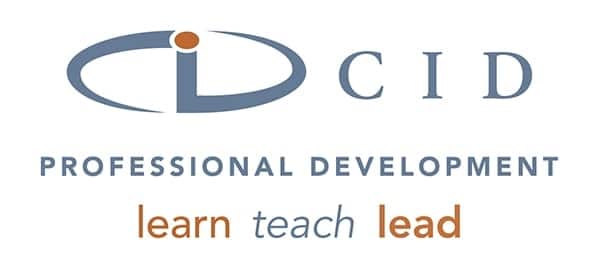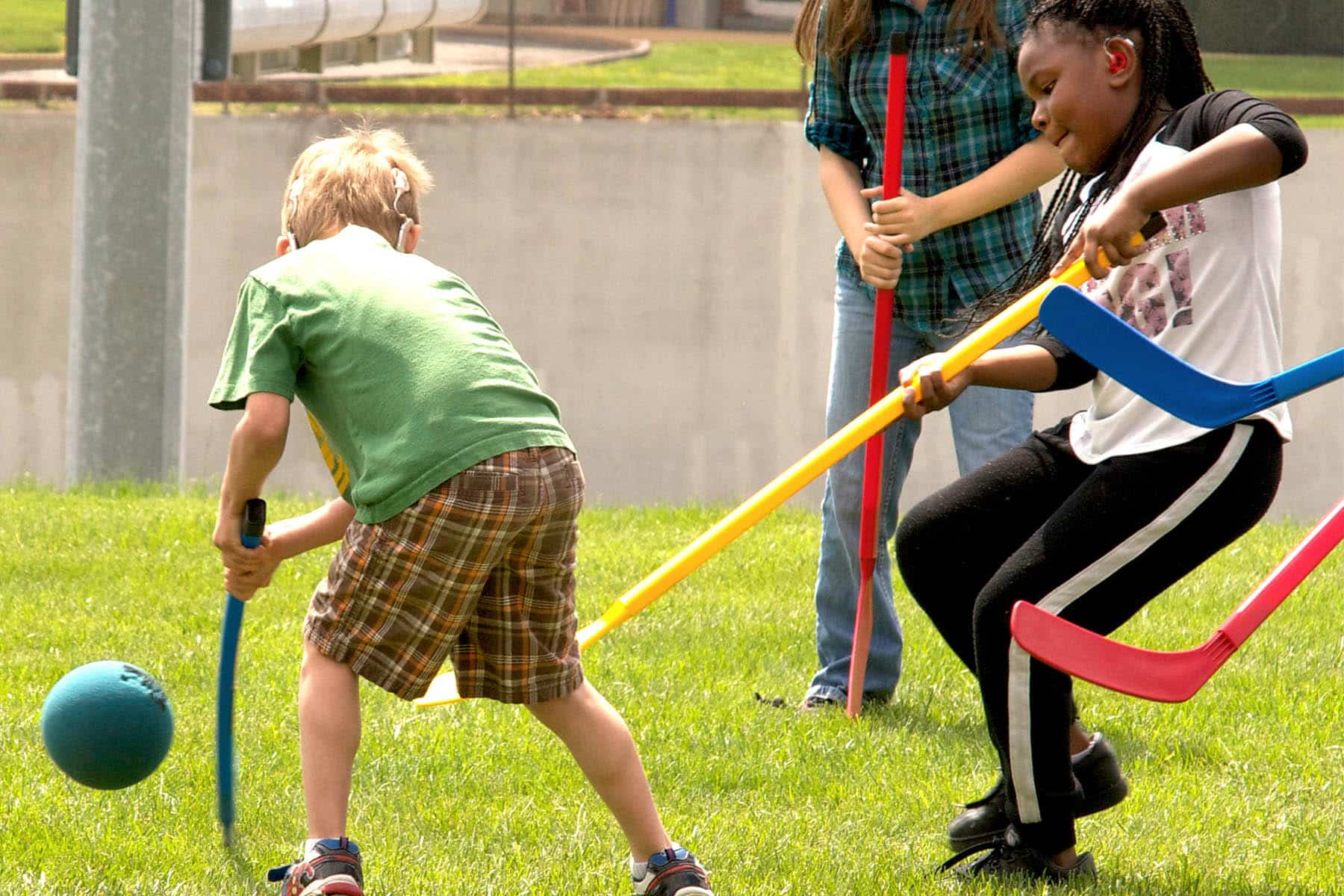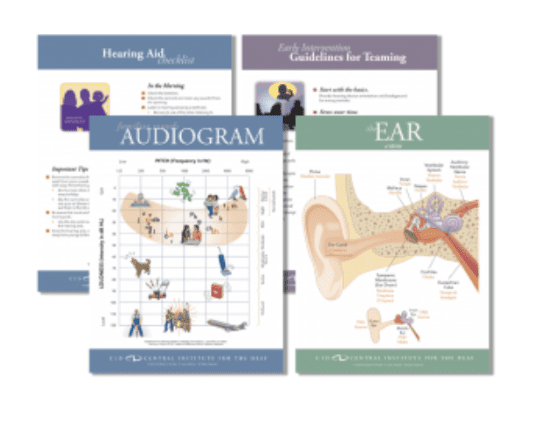You are ready to venture into the world of youth sports with your child who has hearing loss. The schedule is posted on the fridge, uniforms are washed, and the gear is ready to go. Halftime snacks are bought, prepped and packed – so what else is there to know and do before game day? For a child with hearing loss, there are several factors to consider. Let’s dive in!
Communication:
Get ahead of the game. One of the most beneficial things you can do to prepare for a successful experience in sports is just that – prepare. Meet with your child’s coach to talk about your child’s unique strengths and needs. Help the coach understand how they might use different communication strategies in their coaching. Develop a plan for implementing these strategies that benefits all players on the team, including your child. Strategies might include:
- using a set of visual signals
- getting each child’s attention before delivering instructions or providing feedback
- developing a plan for addressing communication breakdowns
Not sure where to start? Strategize with your child’s audiologist, SLP and/or teacher before meeting with the coach.
Helmets:
Many popular childhood sports require a helmet – bicycling, t-ball, baseball, softball and football. For a child with hearing loss, wearing a helmet safely includes maintaining the protective properties of the helmet while also allowing for devices to be worn. For cochlear implant users, the helmet must be both protective and accommodating of the internal implant and coil, as well as the processor. Hearing aid users need to focus on making sure the helmet accommodates the device itself. Keep these dos and don’ts in mind as you think about the most appropriate helmet for your child:
- DO consider a helmet that uses a “dial fit adjustment” or “rack-and-pinion” system
- DO use a bandana or skull cap underneath a helmet to improve retention and sweat wicking
- DON’T remove or change any padding inside the helmet to accommodate devices as this may change the integrity of the protection
Sweat:
Sweat and sports go together like peanut butter and jelly. But sweat and hearing aids? Not quite! However, don’t panic! When signing up for any sports team, lesson or league is a wonderful time to locate the dehumidifying tools in your line-up. This may be an electronic or travel dehumidifier. Daily use of a dehumidifier helps remove moisture from hearing devices. An extra cycle in the dehumidifier following exposure to sweat can help lessen the impact of moisture. Consider adding a sweatband or Ear Gear to wick away moisture before it reaches the devices. Talk to your audiologist to discuss potential solutions for your child!
Contact Sports:
Specific causes of hearing loss may present an increased risk for changes in hearing following head trauma. The evaluation of risk in contact sports should be made by your family in collaboration with your child’s team of providers, specifically her ear, nose, and throat (ENT) doctor. For example, those with hearing loss caused by Enlarged Vestibular Aqueduct (EVA) should take extra care to avoid head trauma, which can cause a decrease in hearing. It might be helpful to think of sports in a tiered way as you evaluate risk:
- collision (e.g. football, boxing)
- contact (e.g. basketball, soccer)
- limited contact (e.g. baseball, volleyball, gymnastics)
- non-contact (e.g. running, tennis, golf)
You may also consider the risk to your child’s hearing and devices by asking questions to guide your decision-making such as:
- Can the devices be worn safely with the necessary sport-specific gear?
- Will I need to remove the devices?
- Is my child’s internal device (if a cochlear implant user) adequately protected?
Gyms/Ball Pits:
Heading to an indoor trampoline park? A large gym or ball pit? Consider the use of additional retention items to reduce the worry of losing a device. Retention lines, like an Otoclip or safety line, are one of many options created to help devices stay on and/or attached to the child. Reach out to your audiologist for recommendations that best fit your family’s needs. Questions about electrostatic discharge? Check out Dr. Johanna Lowell’s blog post Understanding and minimizing the effects of static electricity on cochlear implants on CID’s website for more information.
Assistive Listening Devices:
Contact your audiologist before the season begins to discuss the possibility of incorporating equipment that can facilitate communication during the unique, and often challenging, listening situations brought on by sports. Assistive listening devices, such as a DM system, are used to help overcome the challenges of listening in noise and/or over increased distance. Sporting venues, like a noisy basketball gym or large soccer field, can present listening challenges. In addition to the pre-planning strategies discussed earlier, talk to your audiologist to learn more about how assistive technology can help.
Did you know? For school-sanctioned sporting events, a student with a known hearing need (ex: hearing aid(s), cochlear implant(s), DM system, sign language interpreter) can seek accommodations through the state’s athletic governing body. Requests for accommodations should be made before the start of the athletic season. When received, the approval letter should be carried by the coach to all sporting events. Supplemental documentation is often required when making the accommodation request, including but not limited to your child’s IEP and information about her hearing or devices.
With these thoughts in mind, you are ready to start developing a plan. Remember, if the first game isn’t a “home run,” call a timeout, reassess the game plan, and get back out there! Hidden between learning to swing a bat, shoot a ball or swim backstroke are more important lessons, like what it means to be a teammate, resilience in the face of adversity, and most of all, having fun.
– Plan ahead. Talk to your child’s coach and come up with a game plan.
– Strategize. Have a solution for sweat and retention ready to go.
– Evaluate Risk. Consider your child’s unique situation when evaluating which sports and activities fit your family best. Discuss specific concerns with your child’s ENT doctor.
– Consult your audiologist. Identify communication needs or extra equipment that may be helpful.

Brittany Wuebbles is the Director of Pediatric Audiologist in the Martha E. Jones Pediatric Audiology Center at CID – Central Institute for the Deaf. She joined the CID Audiology staff in May 2016 after graduating with her doctoral degree from Washington University School of Medicine in St. Louis. Ms. Wuebbles currently serves children ages birth through 13. Her clinical interests include cochlear implants, amplification and optimizing performance outcomes.












